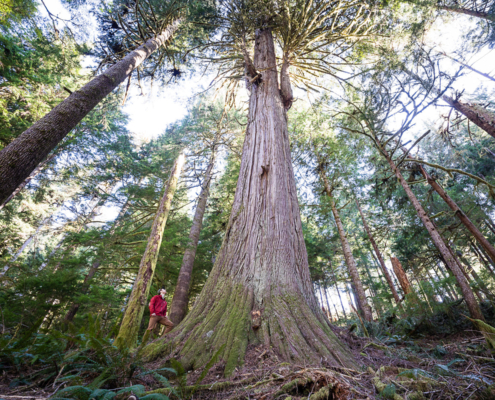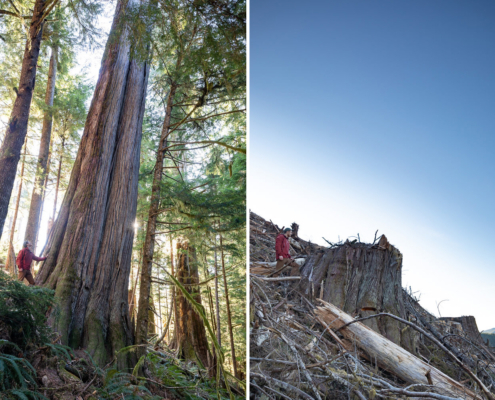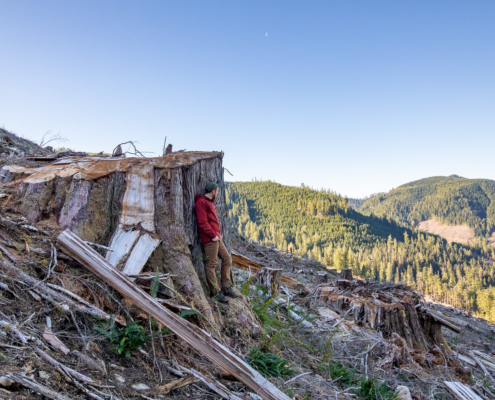
AFA Holiday Hours
Seasons Greetings!
The AFA office will be closed Dec. 24-Jan. 3 as our staff spend time at home with their families. During this downtime, we will be checking emails and phone messages periodically and…

Environmental group calls on province to preserve old-growth forests
Cowichan Valley CitizenDecember 14, 2020
Points to clear cutting along Haddon Creek as shocking
Conservationists with the Ancient Forest Alliance are urging the province to immediately…

In photos: see old-growth go from stand to stump on B.C.’s Vancouver Island
The NarwhalDecember 10th, 2020
Between April and November, a grove of ancient trees was felled in the Caycuse watershed on Ditidaht Territory, pointing to the breakneck pace of clearcut logging…

Photography campaign shows the grim aftermath of logging in Canada’s fragile forests
AFA's TJ Watt was interviewed by The Guardian about the logging of ancient cedars in the Caycuse Valley & the ongoing destruction of BC's endangered old-growth in the face of a global environmental emergency. Read more...
